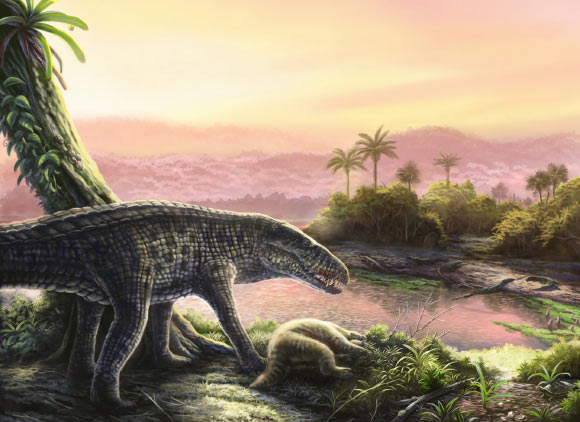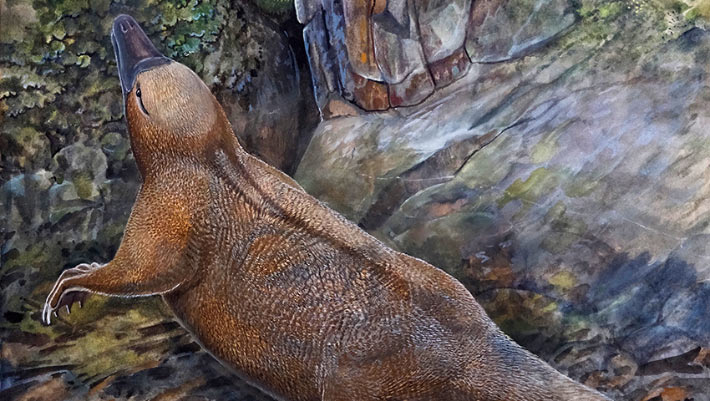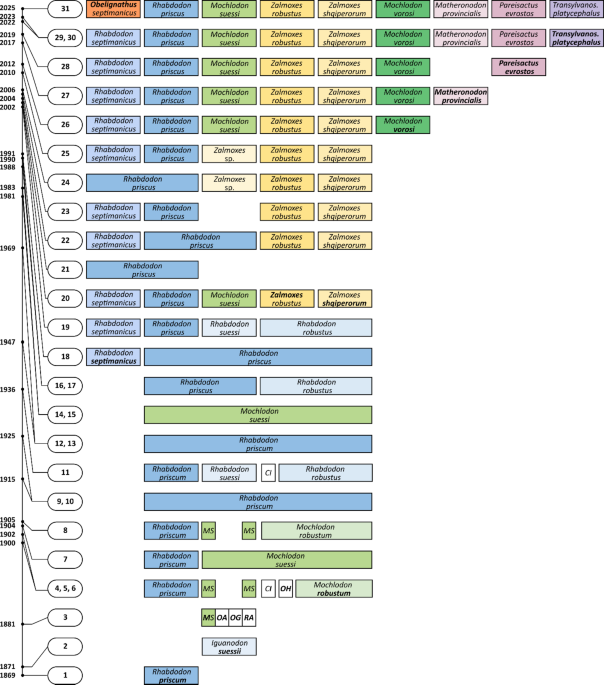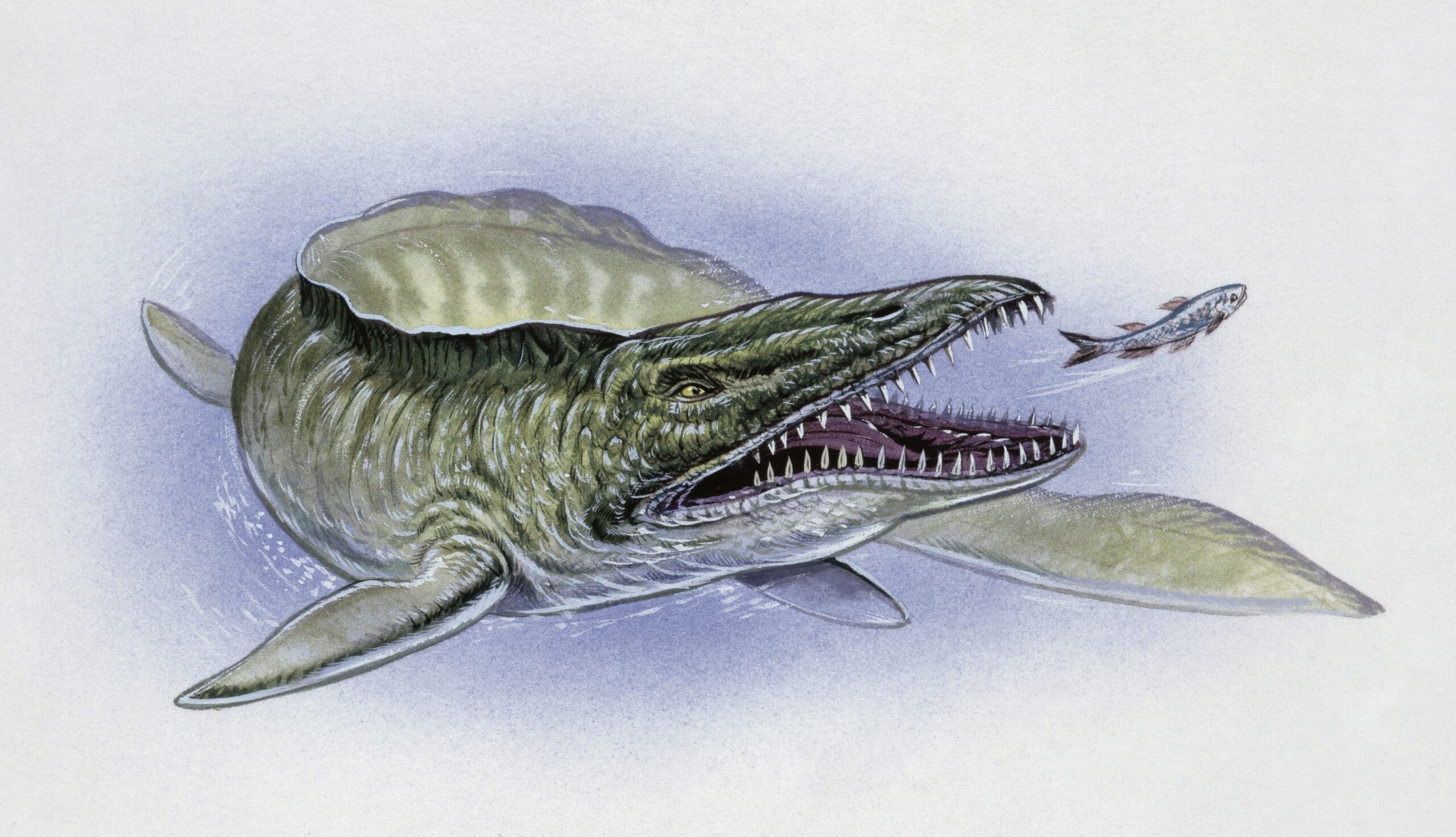Why do some ancient animals become fossils while others disappear without a trace? A new study from the University of Lausanne, published in Nature Communications, reveals that part of the answer lies in the body itself. The research shows that…
Category: Paleontology
-

Ptero firma: Footprints pinpoint when ancient flying reptiles conquered the ground
Fossils of footprints over 160 million years old have helped palaeontologists at the University of Leicester to narrow down when pterosaurs adapted to live on the ground.
These awe-inspiring flying reptiles of the Mesozoic era are often imagined…
Continue Reading
-

6-Million-Year-Old Fossils of Terrestrial Apex Predator Discovered in Dominican Republic
This apex predator is a type of sebecid crocodyliform with South American origins, according to new research led by the Florida Museum of Natural History.
Sebecid crocodyliforms dominated South American landscapes after the extinction of…
Continue Reading
-

Geobiology: Iron, sulfur, heat — and first life
The very first cells obtained their energy from geochemical reactions. LMU researchers have now managed to recreate this ancient metabolic process in their laboratory.
Most likely, the earliest ancestor of all life on Earth liked warm conditions,…
Continue Reading
-

Landmark experiment sheds new light on the origins of consciousness
An experiment seven years in the making has uncovered new insights into the nature of consciousness and challenges two prominent, competing scientific theories: Integrated Information Theory (IIT) and Global Neuronal Workspace Theory (GNWT). The…
Continue Reading
-

One of Earth’s ancient volcanic mysteries solved
Geologists led by the University of Maryland and the University of Hawai’i finally connected the dots between one of the largest volcanic eruptions in Earth’s history and its source deep beneath the Pacific Ocean.
In a paper published in the…
Continue Reading
-

Early Monotremes were Semiaquatic Burrowers, Paleontologists Find
Up until now, the accepted understanding about these egg-laying was that they were both descended from a land-bound ancestor. And while the platypus ancestors became semiaquatic, the echidnas stayed on the land, or so the story went. But an…
Continue Reading
-

Simulated early Earth geochemistry fuels a hydrogen-dependent primordial metabolism
Lennie, A. R., Redfern, S. A., Schofield, P. F. & Vaughan, D. J. Synthesis and Rietveld crystal structure refinement of mackinawite, tetragonal FeS. Mineral. Mag. 59, 677–683 (1995).
Google Scholar
…Continue Reading
-

Exploring the diversity and disparity of rhabdodontomorph ornithopods from the Late Cretaceous European archipelago
For the sake of convenience, we refer to ‘Rhabdodon’ septimanicus by its new genus name, Obelignathus, in our description and visualization of the results. For details on the nomenclatural acts, see ‘Material and methods’ above and the…
Continue Reading
-

Geologists accidentally found a monstrous mosasaur fossil in Mississippi mud
Mosasaurs were some of the most fearsome apex predators to ever stalk the Cretaceous era’s oceans. And according to Mississippi Department of…
Continue Reading